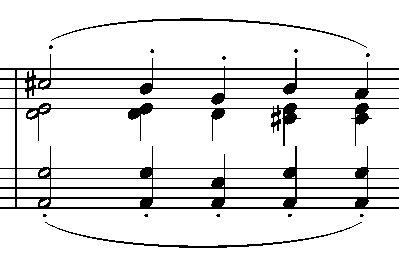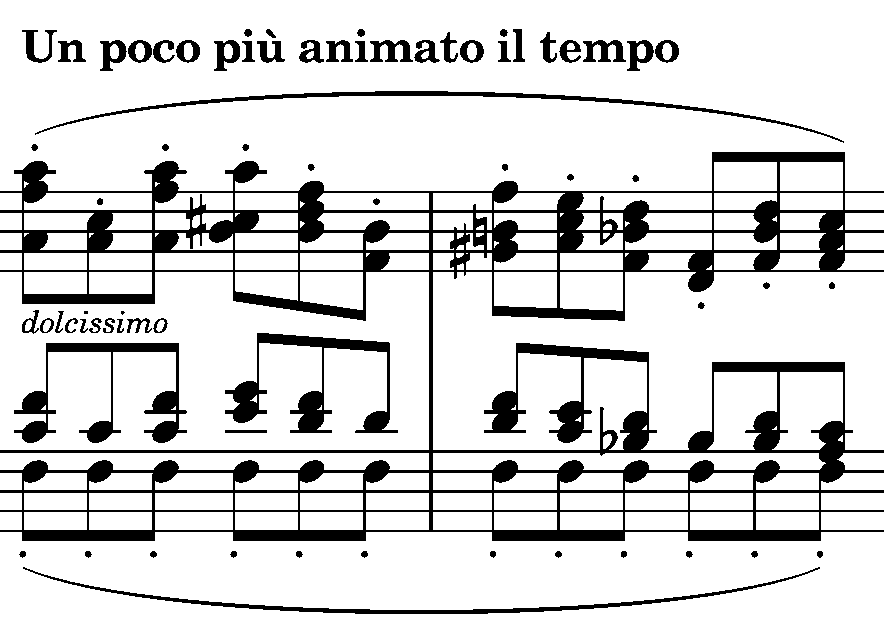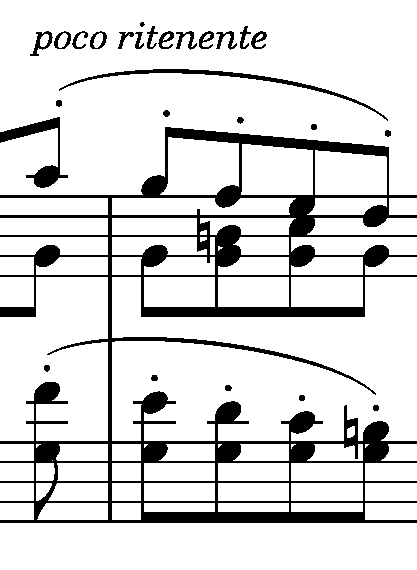One question that pianists ask every so often is the following: Does mezzo-staccato simply means non-legato?
My answer derives from my provenance as a student of the English Piano School—a pianistic school that (surprisingly to many) exists, and to my mind has one main axiom: Attention to detail. But what is the English piano school is a subject for another article, one that I will tackle one day, hopefully. Anyway, attention to detail is what helps us separate the different notions and aftertastes of notes and can show us that different articulations have different names.
Now, coming to why mezzo-staccato is different to non-legato, it is indeed a question that has two answers. And that’s only to start with…
Firstly, if the definition of mezzo-staccato was firmly established in the pianistic world, it wouldn’t need an endless charade of debating, a constant going back and forth explanatorily, or philosophical nights with cheese and pinot noir from Patagonia. And secondly, because the articulation simply contains the word “staccato” in its name. If it wasn’t affiliated with staccato and was closer to the notion of legato (or non-legato in our case) it wouldn’t have had that staccato word hanging around.
I often (usually out of the blue) ask my students the following question:
“How much is one plus one?”, only to be looked at as if I were some kind of mad person (not that I’m not) and I receive the following reply:
“Um, it’s… two sir”, they would softly reply looking at me perplexed,
followed by me saying
“Are you sure?”
“Um, yes, sir!”, with a smile on their faces.
The reason I ask this question is to persuade my students that if something in life is well established, it does not need regular examination of its validity and it does not have a controversial status. One plus one equals two indeed, and no-one in this world can deny it. Whereas, If I asked my students “what is fast in music?” Or “who is the best pianist in the world?”, they would have had a different story as to why their opinion is the correct one.
Scolding commences:
So, yes, do make this “leap of faith” and believe it: Mezzo-legato is not the non-legato; if we want to fix our salty soup we do not add sugar, if you get my gist (Wait what?). A drink that is non-hot does not mean it is medium-cold, okay? Non-hot means it is not lip-burning hot but still lingers to the sphere of “hot”—it is by no means medium-cold and you should be extra careful when you are trying to consume it. So.
Same with the dreaded mezzo-staccato. Mezzo in the Italian language means ‘half’—medium, middle, in the midst of something. Staccato means ‘detached’. Of course, you could argue that the etymological zeitgeist of every word constantly changes, and that we should not take every word too seriously and perceive it to its face value, per se, still, mezzo-staccato, means medium STACCATO! Okay? Medium, what? Medium-Staccato!
S T A C C A T O. ST – AC – CA – TO. S-T-A-C-C-A-T-O. Yes, it’s my website and I can do whatever I want. (Sorry, by the way).
Okay. Now that we have established (through my bullying) what mezzo-staccato is and none of you have any objections (!) 👀,
*with a woman’s soft and deliberate voice*
let’s get to how to play this articulation on our wonderful instrument.
Appearance
The articulation is presented with a slur & a dot on a group of two or more notes:

Play
- In piano-playing mezzo-staccato involves the use of pedal. We tackle the quavers above as we would if they were simply written as staccato, but by adding the pedal, as well—the pedal could be half-pressed, fully pressed, and so on and so forth. Sometimes the pedal is not written, but assumed.
- The notes of the mezzo-staccato are naturally treated as part of a group and not as individually articulated entities.
- The mezzo-staccato articulation is often used in pianistic passages where the composer desires a sense of ethereal sound combined with a kind of a pitter-patter feel.
Difference to other short articulations
Mezzo staccato is different to staccato, since it requires invariably the use of pedal; otherwise it would have been almost impossible to distinguish between the two.
It is different to tenuto, because it doesn’t require the note to sport its full value, nor pushes for a sense of crescendoing as on every tenutoed note.
Again, its distinction to non-legato is apparent since a) non-legato passages do not necessarily require the use of pedal, b) the non-legato is closer to the notion of legato (as forcefully presented above), c) non-legato should be held for almost three quarters of its full duration, in contrast to the mezzo-staccato which should be held for up to half of its full duration, and d) because non-legato is more versatile since contextually can be used in more compositional circumstances.
In context
In Liszt’s Années de Pèlerinage II, in the Piu lento section we encounter this passage which requires the use of pedal in every beat (à chaque mesure) to facilitate a sense of broadness in the sound that gently prepare us for the finale’s eminent agitation:

In another of Liszt’s works, Paysage, from his Twelve Trancendental Etudes, the use of mezzo-staccato is ample. Here’s an instance were Liszt intensifies the serenity of the study’s landscape descriptiveness:

In Beethoven’s Op. 111, a little after we are introduced to the tempestuous Allegro con brio ed Appassionato, Beethoven chooses to not continue with the uniformity of the rushing semiquavers and opts for extra turbulence by hitting the breaks by repeating the previous phrasing with mezzo-staccato. Here are bars 30-31:

As with all piano music it all depends on context of course (how convenient, eh?) and you should exercise caution when trying to interpret works that have been established in the ears of audiences and in the scholars’ doctrines. And always remember: no matter what a website, an article or a self-appointed expert says (*cough), nothing can beat the piano teacher in the class.
Copyright © October 1st, 2020 by Nikos Kokkinis
=========
Support my writings and receive new music every month. Learn more>>

